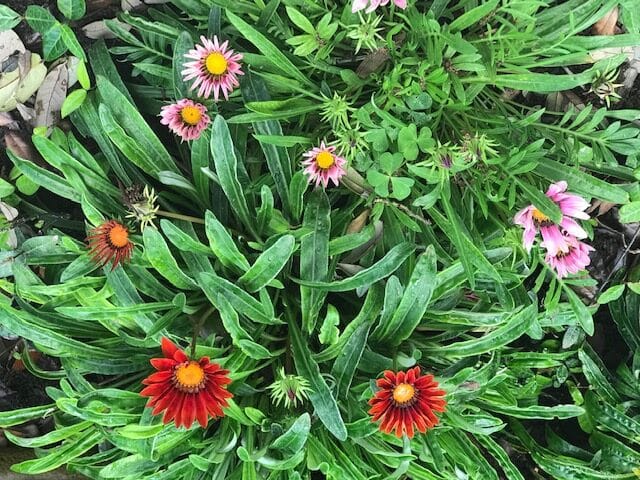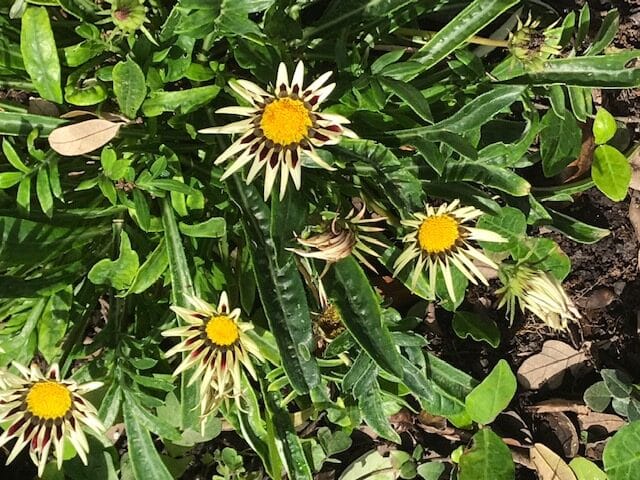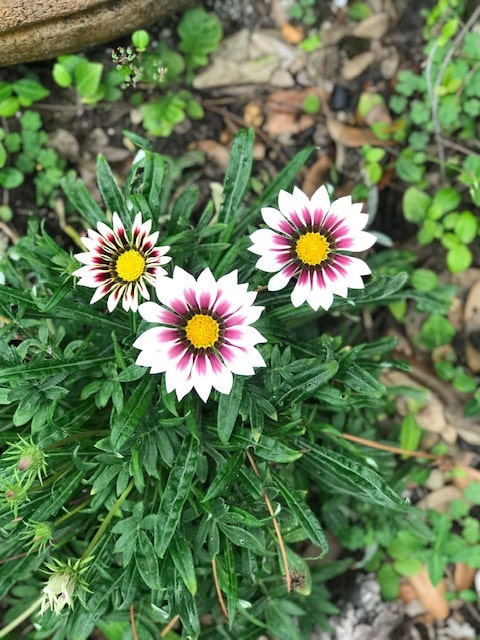By Lori Murray, Cameron County Master Gardener, Texas Superstar Specialist
The gazania (pronounced gaze uh nee uh) has become one of my favorite plants. Several years ago Grimsell’s had a number of good-sized shallow, round pots filled with tiny striking flowers that I just had to try. They did well planted in the center of my backyard around the fountain where they get the greatest amount of sun I can provide. What I didn’t know and never expected was how large these little devils would get, how quickly they would spread, and how hardy they would prove to be.
They do not require exceptional care from me, and they will grow and grow and bloom and bloom. The only problem I had was that I planted some of them where they got splashed with water from the fountain and they made their displeasure known by drooping and wilting and generally looking weak. When I moved them to a dryer area they once again thrived. Here’s what the research said:
Named after 15th century Greek Italian scholar Theodorus of Gaza, gazania is a rugged, drought and heat tolerant plant native to South Africa. It can be either an annual or a perennial, and in our area it has a shot at being a perennial, much like the penta with which it is often planted.
Native to the rocky cliffs and grassy hills of South Africa, gazania needs to be planted where it gets plenty of sun. Once established with regular watering, it will thrive even in the heat that radiates from pavement next to a driveway or in another trouble spot in the yard. In less than full sun, however, the plants will become leggy and susceptible to foliage problems like powdery mildew. Be careful too that it’s not planted in heavy soil where it might stay moist for long periods of time and that it doesn’t get too much water during the winter because it has a tendency to rot in those conditions.
One of the videos I saw recommended planting gazania in masses of ten, twenty, or even thirty bedding plants. To encourage bloom, deadhead old spent blooms. Gazanias come in a wide variety of colors and patterns and range from under 6 inches in height to 12 inches tall; they will spread 6 – 12 inches wide. The smallest type is an excellent groundcover. The plant grows in zones 4 – 10 and is perennial in the more southern zones. You can collect seeds in the fall to sow again next year or you can let the seed fall and the plants here should reseed themselves.
The blooms of this African Daisy are striking and come in a wide variety of colors and patterns, mostly in the range of warm colors like yellow, orange, and red. Many flowers are combinations of colors with one base color and a deeper color running through the middle. Its leathery foliage is a clue to its drought tolerance, and it will do well in rock gardens. Specific to our area, I learned that the plant is also salt tolerant and would do well in sea-side gardens. Although they attract butterflied during the day, gazania’s blooms close up as night approaches or sometimes on stormy or very overcast days. The fact that blooms are only open during the day and closely shut at night should be factored into your placement of this striking little stunner.











